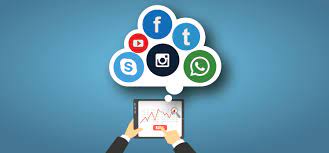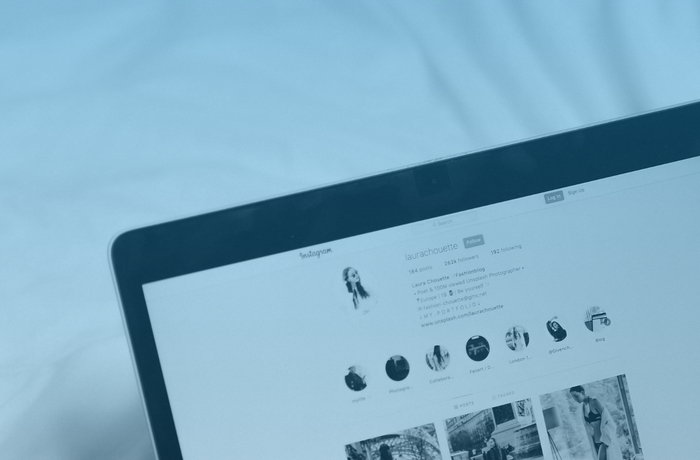You must have heard this saying of the famous American designer Marc Ecko saying,
“You too are a brand.
Whether you know it or not.
Whether you like it or not!”
And if you still think personal branding is an oxymoron, especially in this internet era, you couldn’t be more wrong.
What Marc Ecko says about branding is completely apt not just for direct sellers but for B2B sellers as well as B2B professionals. More and more companies emphasize that employees use their social platforms to promote their brand, which in turn means first building your own brand online. This is because, on average, posts shared by employees have 8 times more engagement than the same post being shared by the company.
Apart from this, it is now more than ever crucial for social selling and recruitment because most businesses have gone remote, which doesn’t look like it will change completely anytime soon.
Personal branding is a big topic in online business. It’s something that is becoming more and more important to every profession and not just marketers. And for a good reason. In this blog post, we’ll take a look at 6 different personal branding tips to help increase your personal brand and your online visibility in the process.
But before that, let’s understand what personal branding is and why it is crucial in the post-pandemic world.
Table of Contents:
- What is personal branding?
- Why should you invest in personal branding?
- 6 Tips for building for personal branding to improve visibility
- Parting words
What is personal branding?

Personal branding is the story about yourself that you tell the world, containing details about your skills, experiences, talents, accomplishments, opinions, and personality. Personal branding is a process of promoting yourself and establishing yourself as the influencer or thought leader of the domain.
For online personal branding, you can utilize various social media platforms like LinkedIn, Clubhouse, Youtube, Medium, Instagram, etc. Depending on the platform, you can share your expertise or thoughts via video, image, post, story, article, or discussion.
For example, LinkedIn influencers often share their professional journey stories with simple text posts under the constraints of 3000 characters, now more often topped with an image or video post. They even share articles to show their expertise in their respective niche. On LinkedIn, you can share your articles and blogs of 110,000 characters.
With so many social media platforms providing so many amazing features for personal branding, not choosing to do so, in Spock’s words, is completely “illogical.”
Now before further adieu, let’s get into understanding why you as a professional or B2B seller should invest time in personal branding.
Why should you invest in personal branding?
As a profession, your focus is only on your job and building your skills, and that is amazing.
However, if you don’t take the time to invest in a little personal branding, you might lose out on the race of getting a good job or acquiring a high-end client.
Landing high-paying jobs/projects

With most companies working remotely and planning to remain remote or adopting a hybrid working model, personal branding has become more and more crucial for landing a good job. G2 branding’s latest reports indicate that 85% of US recruiters and HR professionals’ hiring and prospecting decisions are based on candidates’ online reputations.
And not updating and investing time in building a good online personal brand can result in the loss of a suitable job position. The same G2 study showed that 70% of US recruiters and HR professionals would reject a candidate or not even consider the candidate for the position, based on his online profile.
For CXO, VP and Country Head level employee prospecting are mostly done based on candidates’ personal branding persona apart from their experience.
Social Selling

If you are a B2B seller or entrepreneur, you must have understood the art of quickly adopting the selling strategy towards social selling during this pandemic. If not, consider the following reasons for working on building a personal brand on social media.
To build trust in the prospect
If a person gets to know you and all the things that you have done through your LinkedIn profile, he or she can make a decision on whether you would be good for their business or not.
By engaging with customers on their posts from time to time, your prospect would start recognizing you, and with good direct content, you might build trust with them over time.
And by understanding all aspects of your expertise and who you are as a seller or entrepreneur, this individual can decide if there is the potential for collaboration or not.
Differentiate you from your competition
We all know sales is a cut-throat game. But by investing time in building a personal brand and networking, you have taken several strides in one go. Networking affords you several advantages over would-be competitors.
If you’ve taken the time to cultivate your public persona, then you’ll easily distinguish yourself from competitive salespeople who don’t maintain such strong personas or present vastly different ones.
To sell bigger and more
When it comes down to sales, you should always consider your personal brand an important part of your reputation. Salespeople’s main responsibility is selling products and services every day, but most people buy from a person, not a product. Therefore, how you present yourself could be the deciding factor for which company gets their business more often than another provider.
Company and product branding

Ultimately, the reputation you build and the brands you create both materially affect how business gets done. Whether you’re a salesperson or not, your personal brand will follow you through your entire business career.
You never know when prospects are going to Google your name, so be sure that what they find reflects exactly who you are and what is important to you!
But it doesn’t mean leaving your profile empty. Also, remember that certain behaviors tend to perpetuate themselves, so make sure that any actions that are commented on under your name on social media or elsewhere reflect the kind of profile of a person with whom clients feel comfortable collaborating within their entrepreneurial endeavors.
But at the same time, your personal branding can indirectly help with promoting your company, its services, updates, news, and accomplishments. Using your profile can create a positive image of the company and product in the client’s and prospect’s minds.
Now that you are aware of the urgency of investing your time in building a personal brand, let us get into some sure-shot, amazing tips that will surely work for building your online personal brand.
6 Tips for building for personal branding to improve visibility
Like with anything, for building a personal brand online, let’s start at the basics.
#1. Keep all your social media updated

A few other people may have helped you out at the beginning, but now it’s time to strike out on your own. Update the account you are planning to leverage to build your brand and add all your data, accomplishments, and interests. And invest in a good professional photo for your profile.
Be social, get people talking about your projects. If a person takes the time to engage with your post, make sure you take the time back to respond in kind.
Maintain communication standards, show respect for those who support you, and be open and honest about how things are going. Regular engagement will help you stay top of mind when people consider working with you or whatever business endeavor it is that you’re looking to push forward.
#2. Invest time in building an online persona with positioning statements

Crafting a personal positioning statement is like creating a target-customer avatar.
It’s you, but it isn’t.
You identify who your customer type is, describe the pain they’re experiencing, and then explain how your product or service offers them an immediate solution to that very specific problem they have.
A good way to get started when making your own avatar is to think back on the customers with whom you’ve spent the most time interacting with during your career. Next, wrap that persona up in simple statements about their daily struggles and then compare how your personal brand aligns with their personality and goals.
#3. Consistency

You must have heard that you can achieve any goal with consistent hard work. The same principle applies here– consistency is the key to getting your posts more visibility on social platforms.
Ensure a consistent experience is provided when communicating on your network. You want to make sure that whoever interacts with you recognizes your personality professionalism and will feel welcome in doing so because it’s familiar. Use the same name, tag line, and statement across all social media platforms you use.
When people repeatedly see the same information on different sites, this will become easy for them, and customers will be more likely to remember you, thus engaging more meaningfully as consumers.
#4. Networking

Some people mistake personal branding for just sharing content on the social platform, but a crucial part of online branding is people or the audience. And engaging and networking with them play a crucial role in not just improving your online reputation but also in improving the followers count for your account.
It’s about establishing trust and taking care of your audience, which will eventually translate into opportunities for people to learn what exactly you are all about and how they can benefit from that. And you can build trust by engaging with your niche market’s and prospect’s content and eventually sliding into their DM. Or by creating an email or inmail sequence to nurture them and build relationships.
#5. Import your contacts

You must have seen an option prompting you to your import your contact list when signing up on social media platforms.
Our advice: Use it!
Let us tell you why.
Once you import your contact, you will be amazed to see how many of your contacts are already present on social media platforms. And then, you can use their platforms for resharing your content and even engaging your followers.
For example, if you’re on LinkedIn, you might find it startling to find out how many connections you could be making by searching for people already in your email contacts or the CRM software you use. When attempting to connect with someone, make sure that you view their profile as thoroughly as possible before trying to make the connection. This will help to not only better understand this new contact but also give more value and importance to your own profile as well.
#6. Keep up with the trend

It is very important to keep up with the trend and to know what the market is talking about your brand. Using marketing automation tools and brand voicing solutions like BrandMentions can help you keep up to date with the trends.
Apart from this, you need to establish yourself as the influencer or trendsetter, and that is only possible by showcasing your expertise in the niche market and job.
Once you decide to start delving into personal branding, you need to make sure that what you’re providing your audience with is of good quality. You can only show yourself as an influencer if you have in-depth knowledge relating to your niche.
Suppose you have the knowledge and expertise but don’t differentiate yourself from others online. In that case, your work may end up going unnoticed or, even worse – get disregarded for having no value. We suggest using an online marketing automation app or other digital software, which could be quite helpful in bringing together the content you generate (e.g. blog and social posts) so as to attract continuous traffic to your site and offer helpful resources for your customers.
Parting words
Personal branding is the new hot topic – and with good reason.
It has been proven that if you are able to build your personal brand, you are more likely to land a job, be promoted, earn higher pay, and even win clients. In order to learn how to do this, however, you need to understand what personal branding is and how it works. In this blog post will discuss exactly what personal branding is and how you can use it.






